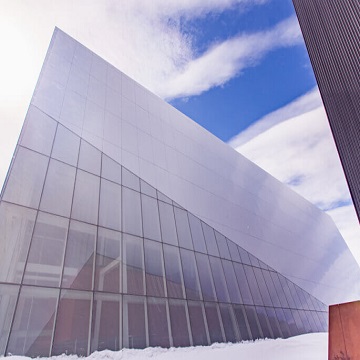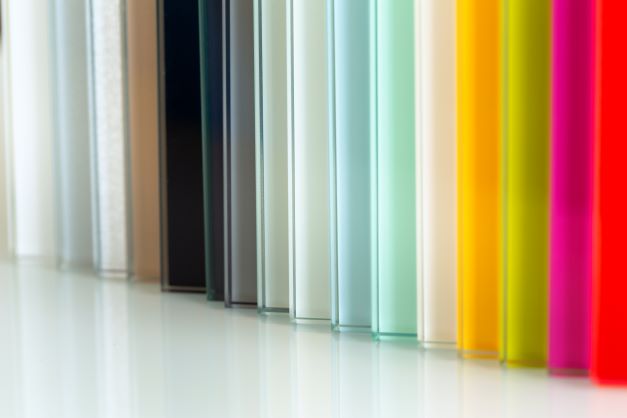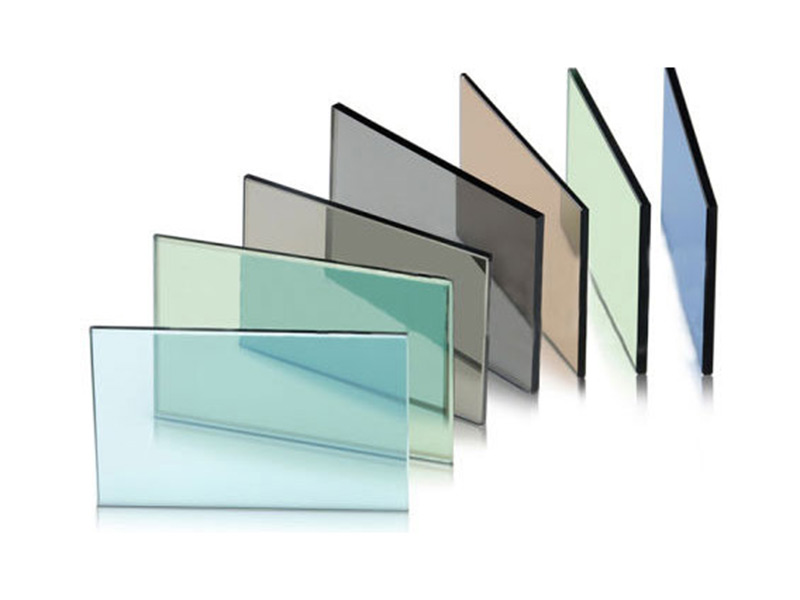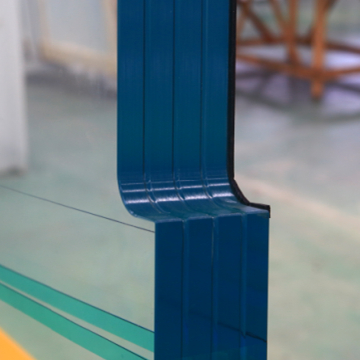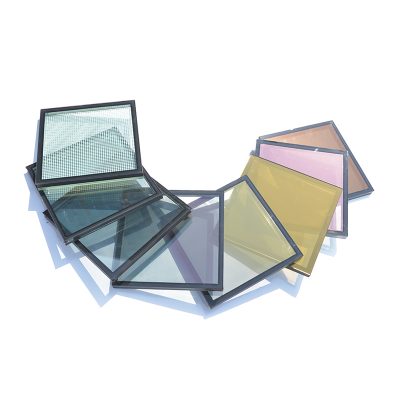Wallkingdon Ultra Clear Laminated Glass is low iron laminated glass produced with low iron flat glass.
Advantages
--The transparency is significantly higher, minimizing distortion of the original colors of the objects behind it.
--Minimizes risks of injury due to accidental impact.
--Retains its overall integrity and continues to act as a barrier even if the glass breaks, protection from vandalism, burglary attack. Able to with stand repeated blows from heavy objects such as bricks, hammers or crowbars.
--Reduces noise, providing a quite atmosphere day and night.
--Provide extremely high levels of protection against UV radiation (over 99 % of UV radiation is blocked), therefore helps to reduce fading and ageing effects.
Description
Wallkingdon Ultra Clear Laminated Glass is low iron laminated glass produced with low iron flat glass. The transperancy of Wallkingdon Ultra Clear Laminated Glass is significantly higher, minimizing distortion of the original colours of the objects behind it.
Colors ans Patterns
Wallkingdon Ultra Clear Laminated Glass can produce with opaque PVB and allow your privacy and security without compromising light transmission.
Application
Wallkingdon Ultra Clear Laminated glass is used in many applications such as,
--Showcases
--Balustrades
--Roof and Ceiling Glazing (Overhead glazing)
--Internal partitions
--Museums
Quality
Wallkingdon Laminated Glass is produced in accordance with EN ISO 12543/1-6 Glass in Building- Laminated glass and laminated safety glass standards.
Processing
Cutting
Laminated glass has to be cut in laminated glass cutting table. Both sides of the laminated glass are cut at the same time. Then the glass is broken/snapped off from the top and the bottom automatically. Cutting laminated glass on float glass cutting table is inconvenient and takes longer time. Furthermore, turning difficulty can cause the glass to break from the uncut side. Our customers using this type of cutting tables should first cut X, then Y according to the sizes being required. Especially for laminated glasses with 3+3 and 4+4 mm thicknesses, which are cut at the same time at X and Y and separated, undesirable breakages can occur while turning the uncut side with a crane.
Scoring length (3210-6000), feeding type, transporting type, heating equipment (IR mid wave), cutting head precision, minimum cutting length, breaking equipment and tilting availability are key factors when choosing a laminated glass cutting table.
Referring to cutting laminated glass, even though there are various applications of machine manufacturers, volatile or washable cutting oil is recommended. Kerosene should not be used for cutting. The dust and particles on the feeding table should be cleaned with air before the cutting process. Therefore the need to clean photocells, LEDs and switches on the cutting system is reduced. PVB bulges at the edges of the laminated glass occur during the production and cannot be avoided. These bulges can be skimmed with cutting wheel to ensure precision.
Depending on the glass thickness, different angles of cutting diamonds are used for cutting laminated glass as in float/annealed glass cutting. For 3+3 135o, for 4+4 145o for 6+6 145o or 156o and for thicker glasses or thicker PVB (> 0, 76 mm) 156o cutting diamonds are used. Cutting diamonds with plastic bodies are used on the laminated glass cutting tables. However 135o diamond with white body, 145o diamond with black body and 156o diamond with red body are widely available on the market, confirmation from the supplier is recommended.
The pressure given to the cutting heads is as important as the proper choice of the cutting diamond. Although minimum and maximum pressure values are declared by the manufacturer for every machine, these values may need to be revised according to the conditions of the glass and the machine.
Subjects to consider when cutting and storing laminated glass
The pressure of the lower cutting diamond should be 0,1 or 0,2 bar higher than the upper cutting diamond for pressure is applied to the lower cutting diamond by the weight of the glass.
If chipping appears on the cutting line, then the pressure of this side is high and should be lowered. Otherwise undesirable breakage may occur.
The angle of the cutting diamond changes as it is used. Therefore the cutting diamond should be changed according to the duration of usage.
When changing the cutting pressure, the desired value should not be set on the manometer directly. First the pressure should be lowered to 0, then after 1-2 seconds it should be increased to the desired value.
During the cutting process, it should be checked whether the suction cups are keeping the glass fixed and the mechanical scalar (if present) is pressing on the glass properly.
Bottom cutting head cutting oil spraying mechanism should have a filter. Otherwise the glass particles and dust may block the oil spraying hole and undesirable breakages may occur.
The wheel near the upper head provides the lower/down glass to break. The pressure of this wheel should be considered. If the setting of the machine and the parallelism of the heads are not adjusted, then the glass that is cut may not easily break but may break from an undesirable part. The wheel should center the cutting line and should press the glass where the cutting line ends. If there is accumulation of cutting oil and dirt on the wheel, the wheel would skid and undesirable breakages may occur.
In such cases glass must be broken manually with by hand or by hits not damaging the glass.
Breaking of the upper glass is carried out by the breaking bar under the machine and the upper jamming bars. These bars should be smooth and not worn. During this breakage upper suction cups (if present) should hold the glass.
Pressure differences between breaking bars may cause undesirable breakage. The air pressure coming to the cutting table should not change.
Straps that move the cutting heads are usually wired inside. These wires can break in time and the plastic layer loses its property. The straps should be checked continuously.
Periodic controls of the pneumatic elements of the cutting heads should be done and issues like oil leaks and pad problems should be solved by periodic maintenance. The neglecting of the pneumatic components may be the reason for undesirable breakage.
Up and down heads should cut the glass simultaneously, and the cuts should be aligned. If there is any difference between the cuts, the glass will break chipped. In this case, the manufacturer should revise the calibrations of the cutting table.
Glass particles and dust occurred during the cutting process, accumulate on the heating resistance used to separate PVB from glass and cause the resistance to turn into opaque color. Because of the accumulation of dirt and PVB drops in time, the time needed for the separation of PVB from glass extends and chipped breakages may occur. As a result of overheating, PVB may slip inward and undesirable breakage may occur. Another disadvantage is the need to cool the glass, which has one overheated side. Otherwise if the overheated side is cut immediately, the glass may break. The resistance should be always kept clean and should be cleaned with special cleaning liquids or alcohol.
Hoses carrying air to cutting heads should be in good condition and without a hole. Otherwise undesirable breakage may occur because of jumping cuts. Hoses should not touch anything during cutting.
The switch tracking the glass at the cutting head should be green at all times. If it blinks this means a jumping cut. The switch position should be adjusted or changed.
Maximum care should be taken for the storage conditions of laminated glass. Maximum care should be taken for the laminated glass not to be affected by humidity and heat.
If laminated glass is installed on site as single glazing without being washed and being dried completely, corrosion may occur. Therefore it should be washed prior to installation on site.
Supplier of The Relative glass In China
Wallkingdon Glass offers not only one of the broadest selections of architectural, decorative, and specialty glass, but we also offer services that allow our clients to do more with glass. If you want to get high quality glass and the cost effective solutions while keeping quality to highest level, send an email to enquiry@wallkingdonglass.com, we will have the valuable input and creativity of glass design experts to help you.


